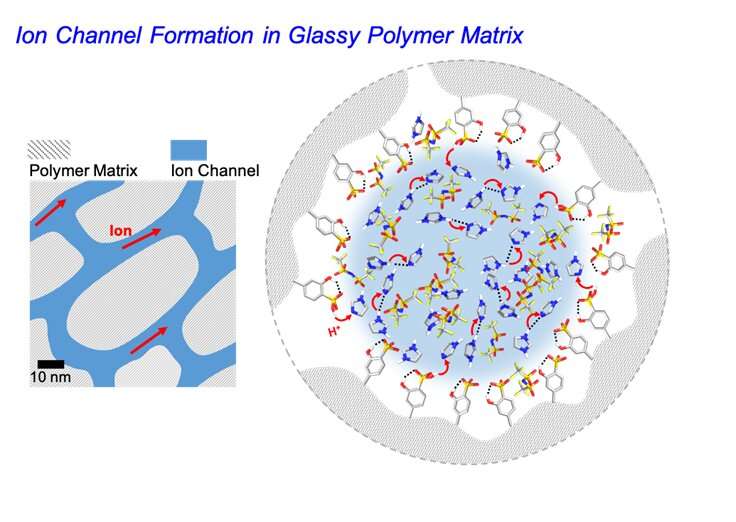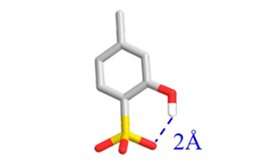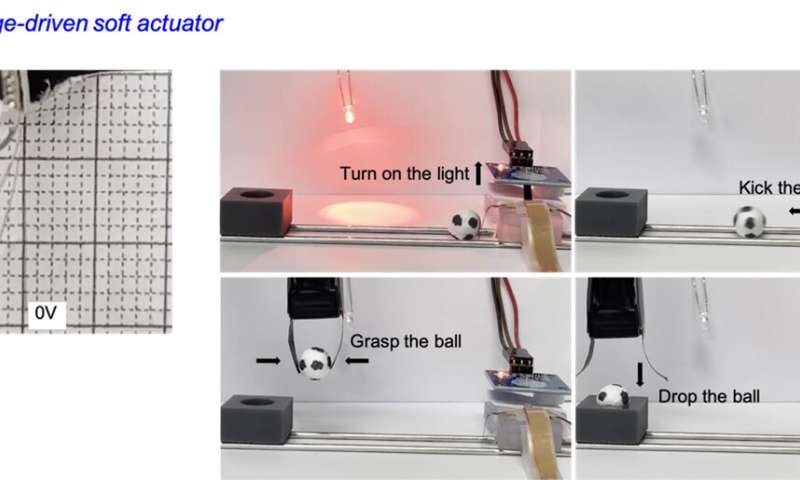Will strong and fast-switching artificial muscle be feasible?

In the American action movie "Pacific Rim," giant robots called "Jaegers" fight against unknown monsters to save mankind. These robots are equipped with artificial muscles that mimic real living bodies and defeat monsters with power and speed. Research is being conducted on equipping real robots with artificial muscles like the ones shows in the movie. However, the powerful strength and high speed in artificial muscles cannot be actualized, since the mechanical strength (force) and conductivity (speed) of polymer electrolyte—the key materials driving the actuator—have conflicting characteristics.
A POSTECH research team led by Professor Moon Jeong Park, Professor Chang Yun Son, and Research Professor Rui-Yang Wang from the Department of Chemistry has developed a new concept of polymer electrolyte with different functional groups located at a distance of 2Å. This polymer electrolyte is capable of both ionic and hydrogen bonding interactions, thereby opening the possibility of resolving these contradictions. The findings from this study have been recently published in Advanced Materials.
Artificial muscles are used to make robots move their limbs naturally as humans can. To drive these artificial muscles, an actuator that exhibits mechanical transformation under low voltage conditions is required. However, due to the nature of the polymer electrolyte used in the actuator, strength and speed could not be achieved simultaneously because increasing muscle strength slows down the switching speed and increasing speed reduces the strength.
To overcome the limitations presented so far, the research introduced the innovative concept of bifunctional polymer. By forming a one-dimensional ion channel several nanometers wide inside the polymer matrix, which is hard as glass, a superionic polymer electrolyte with both high ionic conductivity and mechanical strength was achieved.
-

The chemical structure of a bifunctional polymer unit. Credit: POSTECH -

Various actuation motions of low voltage actuator. Credit: POSTECH
The findings from this study have the potential to create innovations in soft robotics and wearable technology as they can be applied to development of an unprecedented artificial muscle that connects a portable battery (1.5 V), produces fast switching of several milliseconds (thousandths of a second), and great strength. Furthermore, these results are expected to be applied in next-generation all-solid-state electrochemical devices and highly stable lithium metal batteries.
More information: Rui‐Yang Wang et al, Superionic Bifunctional Polymer Electrolytes for Solid‐State Energy Storage and Conversion, Advanced Materials (2022). DOI: 10.1002/adma.202203413
Journal information: Advanced Materials
Provided by Pohang University of Science & Technology (POSTECH)





















